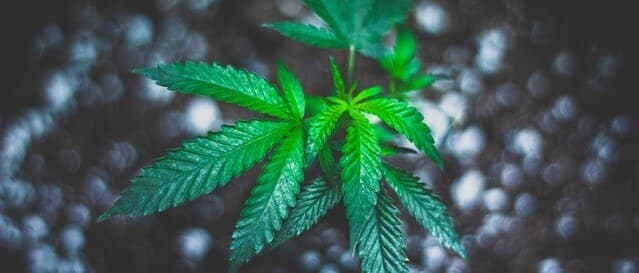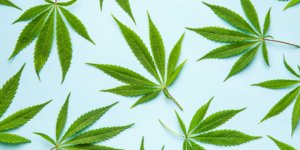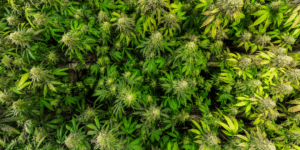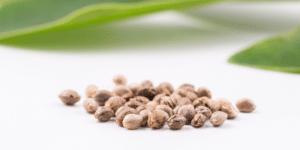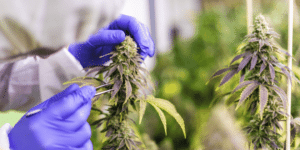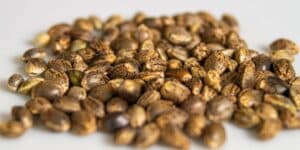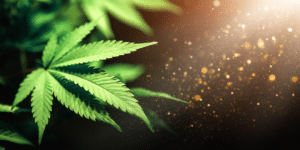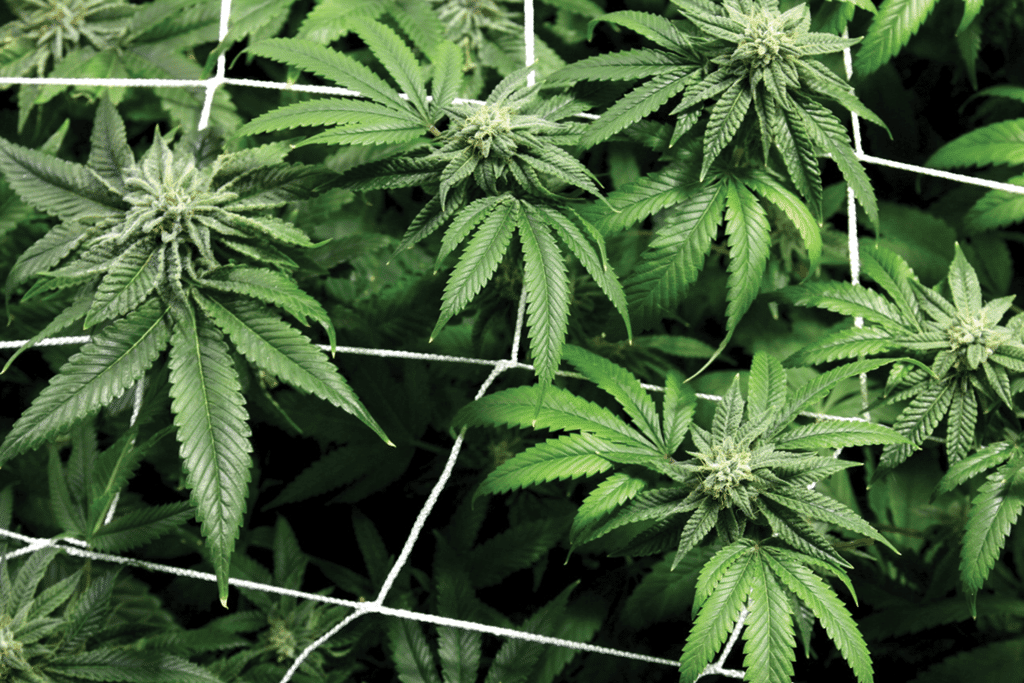Cultivation
Leaves Curling Up? [Main Causes and Cures]
Gardening seems like it should be easy, right? Plants need water, sunlight, and fertilizer to be happy. Unfortunately, it’s not always that simple. Some plants have specific needs, and when those needs aren’t met, it shows. If you’re growing cannabis, you’re probably familiar with this. While cannabis grows like a weed (pun intended), it can be delicate.
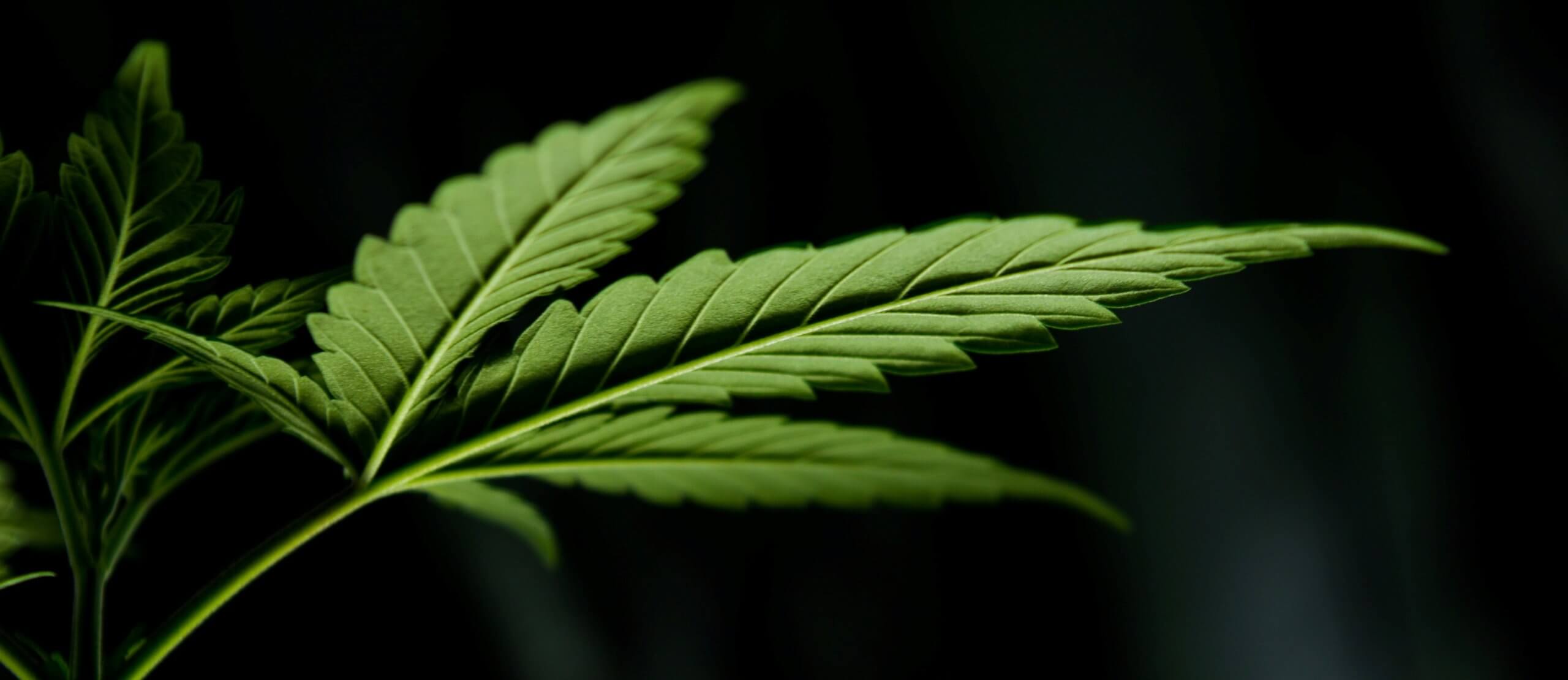 If you’re trying to grow high-quality cannabis, you have to meet all of your plant’s needs. They have to be watered correctly, they have to be fed specific fertilizers, and they’re very delicate to light. When any one of these things gets skewed, you’ll start to notice it. One of the biggest signs of improper care comes in the form of curling leaves.
Are your plant’s leaves starting to curl? Don’t panic, it’s pretty common. There are a handful of reasons that your cannabis plant’s leaves will start to curl. We’re going to cover all of them, and how to fix the issues in this article. Keep reading to get your cannabis back on track!
If you’re trying to grow high-quality cannabis, you have to meet all of your plant’s needs. They have to be watered correctly, they have to be fed specific fertilizers, and they’re very delicate to light. When any one of these things gets skewed, you’ll start to notice it. One of the biggest signs of improper care comes in the form of curling leaves.
Are your plant’s leaves starting to curl? Don’t panic, it’s pretty common. There are a handful of reasons that your cannabis plant’s leaves will start to curl. We’re going to cover all of them, and how to fix the issues in this article. Keep reading to get your cannabis back on track!
Contents
Heat Stress from High Temperatures
When the environment is too hot for a cannabis plant, you’ll start to notice curled leaves, among other things. Sometimes, entire leaves will droop while just the edges curl. Other times, you’ll find that the leaves start to yellow, or that they feel crisp to the touch. These are all signs of heat stress. Heat stress is caused by temperatures that are too high for a cannabis plant to thrive. Heat stress can be experienced by both indoor growers and outdoor growers. It starts with curling leaves and crispy brown edges. However, if it goes on for too long, then the plant may die. These first symptoms, seen in the leaves, are the plant’s way of screaming for help.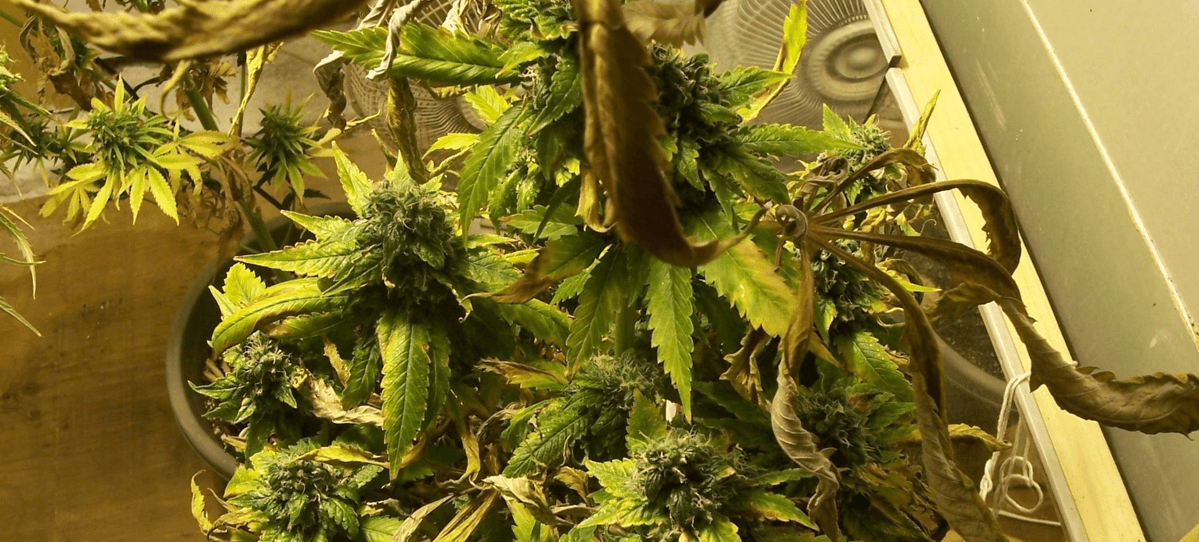 Ideally, the plants that you’re growing will be in temperatures reaching up to 82°F, or 28°C. In temperatures within that range, cannabis plants are able to photosynthesize efficiently. However, as temperatures rise outside of this range, photosynthesis shuts down. When temperatures reach 86°F or 30°C, the plant cannot photosynthesize whatsoever.
The results of this extreme temperature vary at the best, you have curling leaves. At the worst, new leaf growth comes in looking gnarly or misshapen. Old leaves start to break down, turning into crispy ends.
Ideally, the plants that you’re growing will be in temperatures reaching up to 82°F, or 28°C. In temperatures within that range, cannabis plants are able to photosynthesize efficiently. However, as temperatures rise outside of this range, photosynthesis shuts down. When temperatures reach 86°F or 30°C, the plant cannot photosynthesize whatsoever.
The results of this extreme temperature vary at the best, you have curling leaves. At the worst, new leaf growth comes in looking gnarly or misshapen. Old leaves start to break down, turning into crispy ends.
Curing Heat Stress
If you find that your plants are showing the symptoms of heat stress, your cure is going to depend on your method of growing. For indoor growers, conditions must be modified to create the optimal environment. This means adjusting the distance between your grow lights and your plants as they mature. If you neglect this, then the surface temperatures of your plants will quickly reach the danger zone. For outdoor growers, there’s very little that can be done in terms of changing the environment. Heatwaves and droughts will be out of your control. The best thing you can do is create a sunshade for your cannabis plants, removing them from direct sunlight throughout the day. By doing so, their temperatures should be able to stay in the optimal range. If this fails, then cross your fingers that the heat wave passes quickly.Temperatures That Are Too Cold
Conversely, cold temperatures can be just as dangerous for your cannabis plants as high temperatures. Cannabis needs to be grown in temperatures at or above 50°F, or 10°C. When temperatures drop below this threshold, curling leaves are the first sign of trouble. Along with curling leaves, you’ll find that plants will start to yellow, and will begin to die off. Colder temperatures are something to be expected with cannabis, though. In fact, some strains need exposure to cold snaps to achieve their vibrant purples and blues. The real issue is prolonged exposure to the cold. When temperatures remain cold, your plants will likely die. Should they survive the exposure, then they’ll have poorly developed buds and flowers. In some cases, they won’t even reach the flowering stage, and growth is permanently stunted.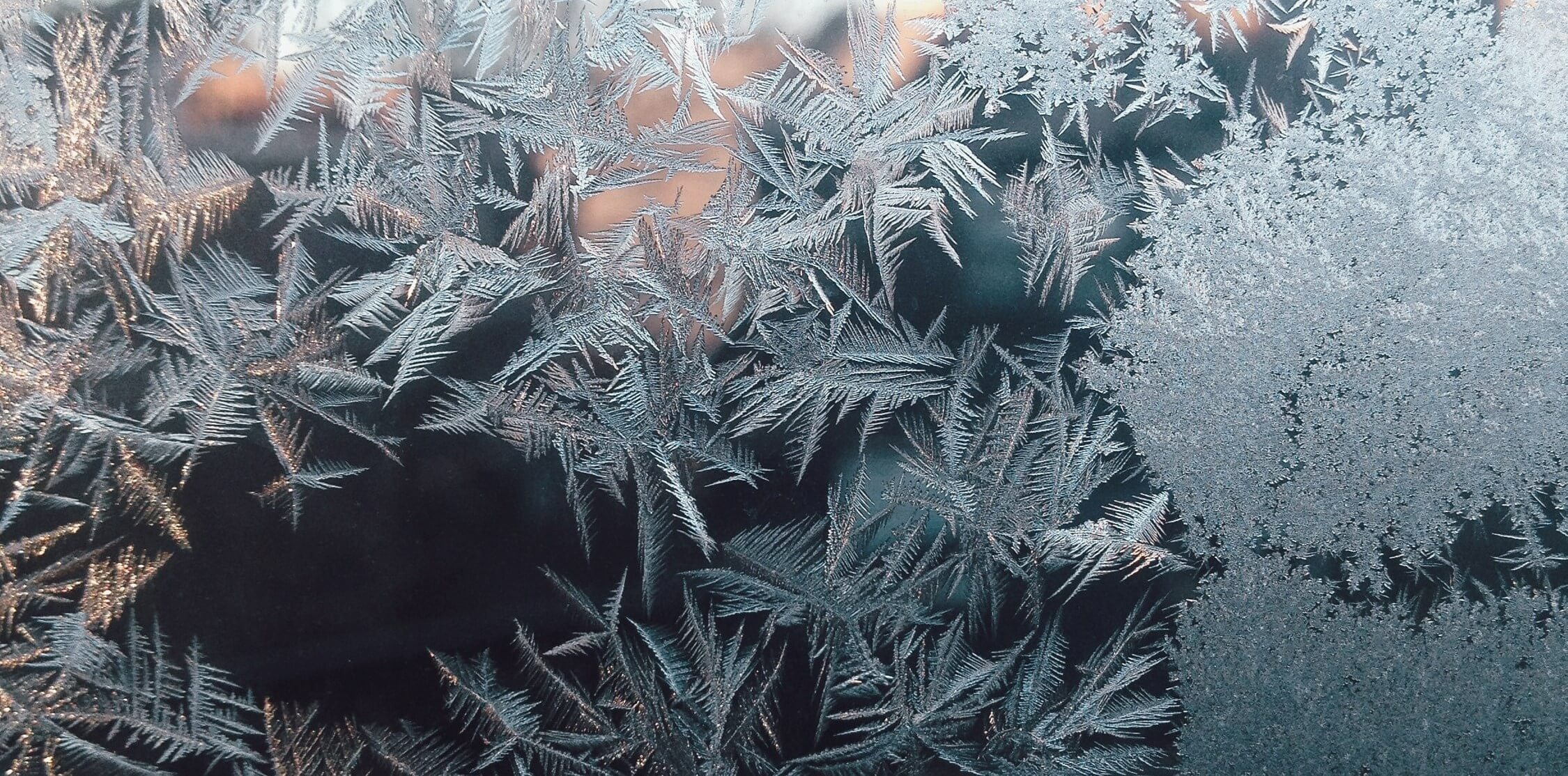 Another thing to be worried about is cold temperatures and high humidity. This can be caused by freezing temperatures overnight followed by rain or sleet. When this happens, cannabis plants are at risk for Botrytis. Botrytis is commonly known as bud rot. All of the work that you’ve put into your plants can go to waste if their temperature is not controlled.
Another thing to be worried about is cold temperatures and high humidity. This can be caused by freezing temperatures overnight followed by rain or sleet. When this happens, cannabis plants are at risk for Botrytis. Botrytis is commonly known as bud rot. All of the work that you’ve put into your plants can go to waste if their temperature is not controlled.
Curing Colder Temperatures
Like the solutions for heat stress, curing colder temperatures is going to be dependent upon where you’re growing your weed. If your weed is being grown indoors, then the solution is easy. You’ve got one of two options. You can turn on the heat, or you can add more grow lights. Either way, you’ll be increasing the temperature. Growing weed outdoors presents a set of challenges when it comes to temperatures. We can’t control the weather, right? Outdoors, you may have to consider harvesting early, depending on the way the forecast looks. To prevent it in the future, though, you can always build a greenhouse or similar structure. This helps to insulate your plants when temperatures dip below the optimal range.Genetics
Weed is a plant with a long history of genetic manipulation. Crossing strains is the best way to get the best qualities you want out of your weed. It’s how highly potent strains have come about, and how classic strains have been preserved. However, with crossing strains, you have to realize that some genetic abnormalities may occur. Sometimes, that shows up as curling leaves.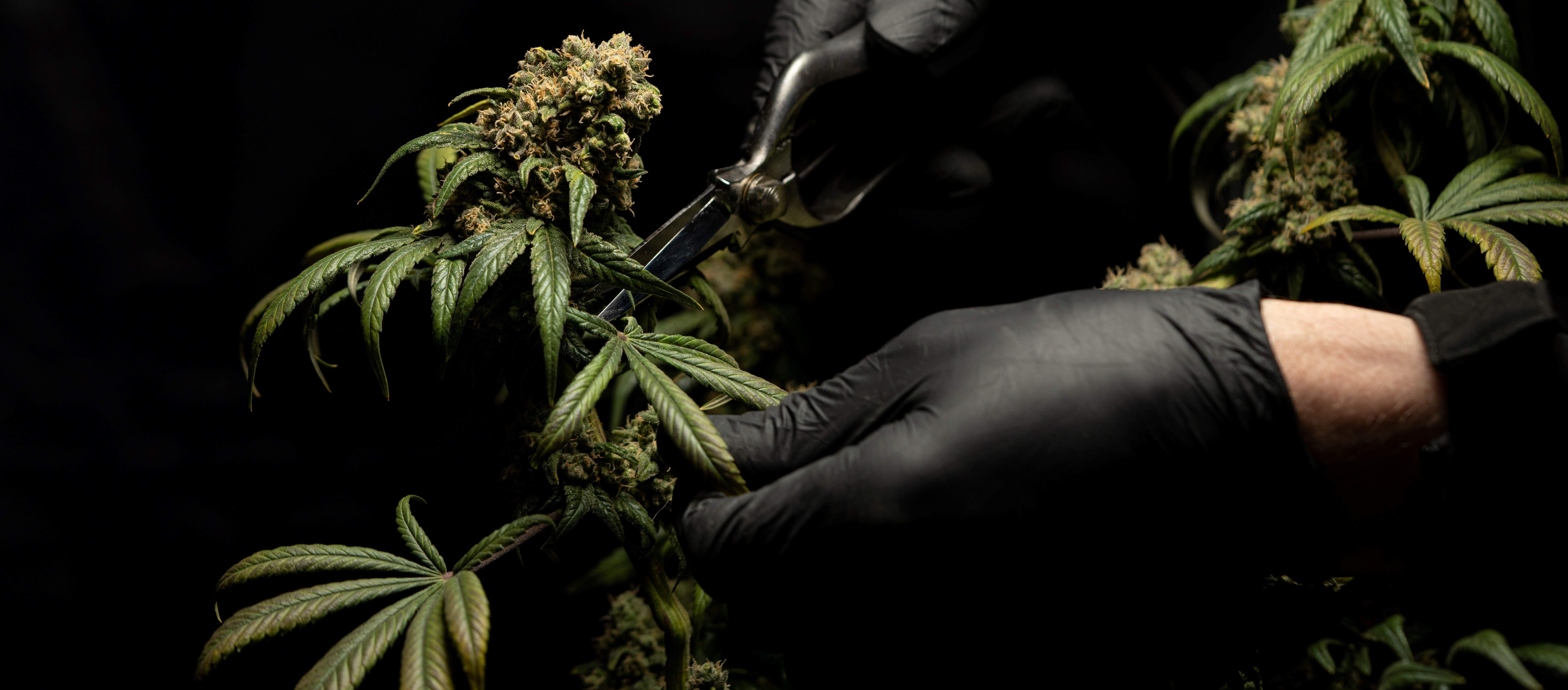
Handling Curly Leaves Due to Genetics
There isn’t really a cure for this, so to speak. If you’ve checked off all the boxes, and you know you’re growing your weed with care, then curling leaves may be out of your control. The best thing you can do is trim these leaves in the hopes that new growth will be better formed. If it isn’t, chalk it up to getting a bad batch. It happens sometimes, and it’s no great loss. Keep moving, and keep growing.Overwatering Your Cannabis
Overwatering is the cause of many issues when it comes to cannabis plants. We want to provide our plants with everything they need to thrive. Plants love water, so of course we want them to stay as hydrated as possible. Unfortunately, providing too much water is often worse than providing not enough water.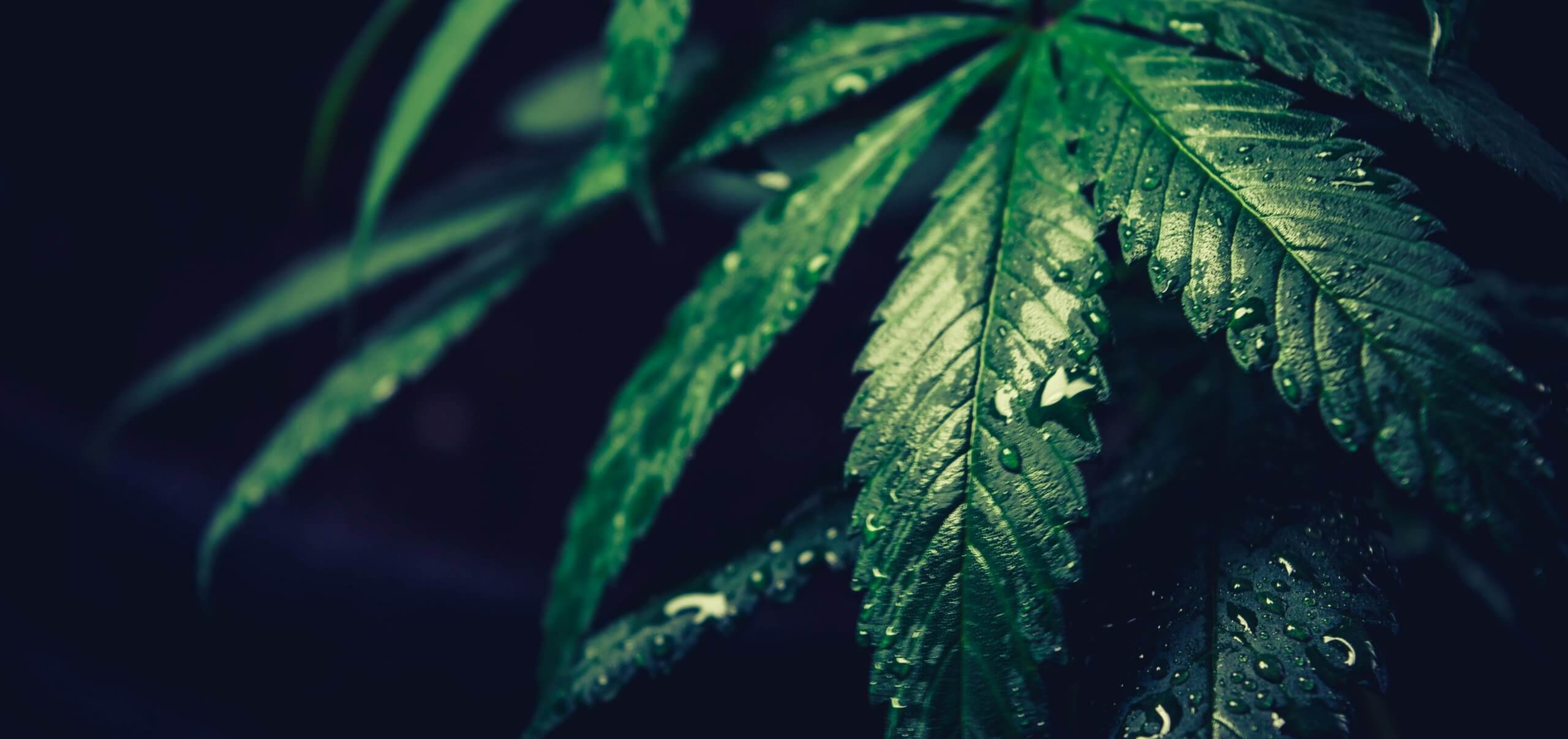 It is entirely possible to drown your cannabis plants by giving them too much water. When cannabis starts to drown, the leaves start to curl, and will eventually droop. These are your first warning signs. If you choose to ignore this and continue to overwater, then you’ll be faced with a few problems or deficiencies that are much worse than curly leaves.
When a cannabis plant’s roots don’t have time to dry out, they begin to suffocate. When they suffocate, they cannot feed the rest of the plant the nutrients that they’re being fed. This leads to a plant that starts to shrivel. As it continues, the microscopic environment around the roots becomes lethal, growing pathogens that will ultimately kill the plant. Too much water has to be handled immediately.
It is entirely possible to drown your cannabis plants by giving them too much water. When cannabis starts to drown, the leaves start to curl, and will eventually droop. These are your first warning signs. If you choose to ignore this and continue to overwater, then you’ll be faced with a few problems or deficiencies that are much worse than curly leaves.
When a cannabis plant’s roots don’t have time to dry out, they begin to suffocate. When they suffocate, they cannot feed the rest of the plant the nutrients that they’re being fed. This leads to a plant that starts to shrivel. As it continues, the microscopic environment around the roots becomes lethal, growing pathogens that will ultimately kill the plant. Too much water has to be handled immediately.
Curing Overwatering
If you suspect that you have curling due to overwatering, you have to first let the roots of your plants dry out. If you catch the problem with overwatering soon enough, you can avoid further treatment, like repotting. After the soil has dried for a few days, start a new watering schedule. Watering should be done on a consistent basis. Provide your plants with water when the first two inches of soil appear to be completely dry. To mitigate overwatering in the future, consider installing an irrigation system. Slow drip systems, or sprinklers on timers, do exceptionally well for cannabis plants.Over Fertilization
Too much of a good thing can quickly become a bad thing. This is true when you’re feeding your cannabis plants, too over fertilization causes a symptom that’s known as nutrient burn. There are a handful of different nutrients that are capable of causing such issues in your cannabis leaves. The three most notorious are nitrogen, phosphorus, and potassium.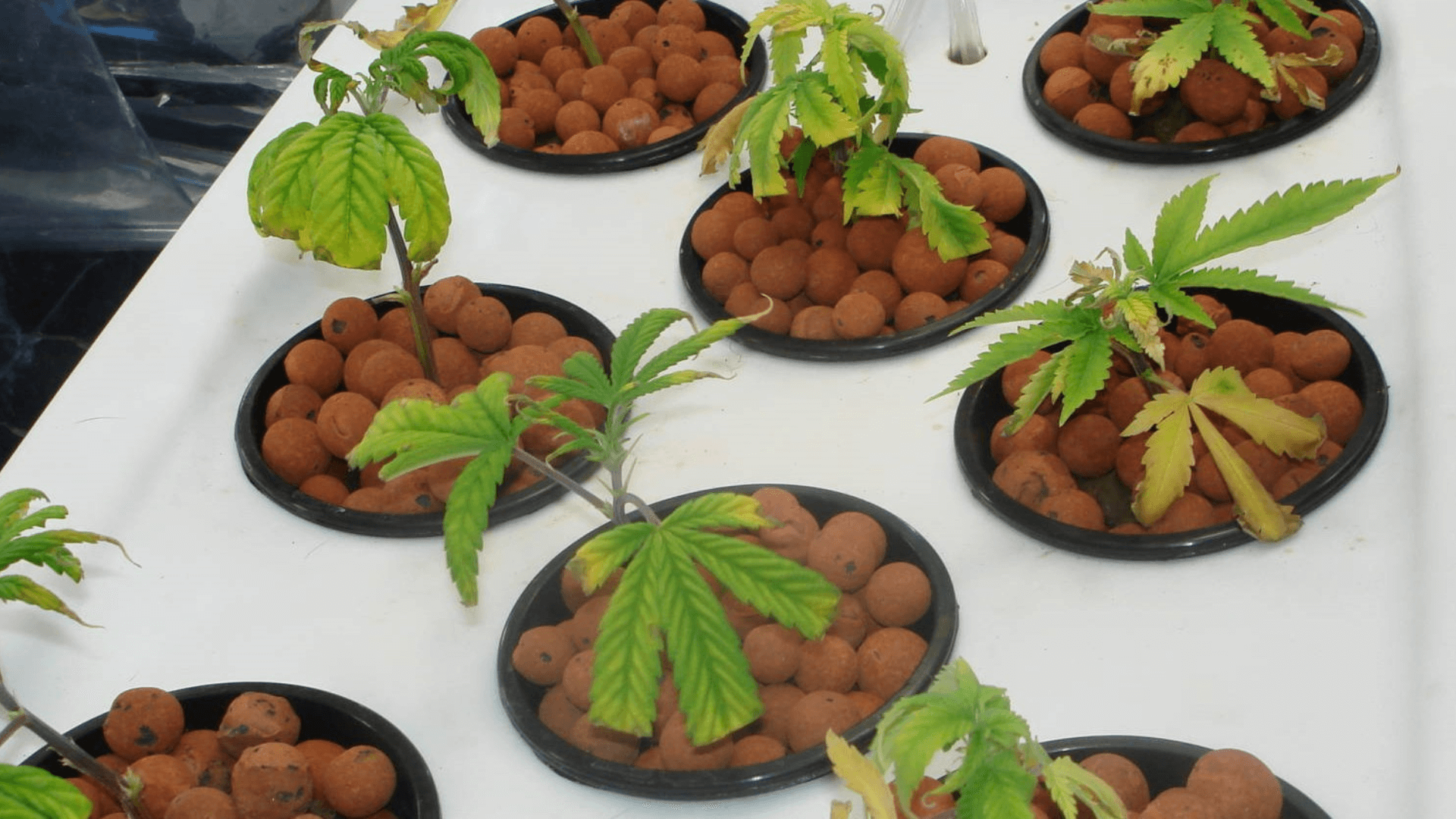 When too much fertilizer is given to your cannabis plants, you’ll notice leaf curling first. However, depending on the severity of the overfeeding, you may notice entire fan leaves clawing, and some that turn into small canoes. Others will have burnt, brown tips, similar to what you see in heat stress. Unfortunately, fertilizer is necessary to get the most out of your harvest. As such, you’ll probably deal with curling from over-fertilization at least once while growing your plants.
When too much fertilizer is given to your cannabis plants, you’ll notice leaf curling first. However, depending on the severity of the overfeeding, you may notice entire fan leaves clawing, and some that turn into small canoes. Others will have burnt, brown tips, similar to what you see in heat stress. Unfortunately, fertilizer is necessary to get the most out of your harvest. As such, you’ll probably deal with curling from over-fertilization at least once while growing your plants.
Curing Over Fertilization
To fix over-fertilization issues, you have to get your fertilizer amounts just right. Once you start to notice curling in your leaves, you’ll have to start over. Rinse your cannabis plant’s roots with fresh water. This will help remove any excess fertilizer. Then, start the feeding process from scratch. Be sure to follow the manufacturer’s recommendations. If the problem persists, your only real option is to reduce the amount of recommended feed or find another fertilizer. Just remember, always start with less if you’re concerned about overfeeding. It’s easier to increase nutrients than it is to reduce them.Final Thoughts
It’s important to realize that plants have life expectancies. As they age, their older leaves are going to show signs of their aging before they ultimately die. One of the signs that a plant’s age is showing is curling leaves. It’s okay to have some curling leaves. However, once you start to see it on the entire plant, you’ve got something to worry about.Other posts about cultivation!
Gardening seems like it should be easy, right? Plants need water, sunlight, and fertilizer to be happy. Unfortunately, it’s not always that simple. Some plants have specific needs, and when those needs aren’t met, it shows. If you’re growing cannabis, you’re probably familiar with this. While cannabis grows like a weed (pun intended), it can be delicate.
 If you’re trying to grow high-quality cannabis, you have to meet all of your plant’s needs. They have to be watered correctly, they have to be fed specific fertilizers, and they’re very delicate to light. When any one of these things gets skewed, you’ll start to notice it. One of the biggest signs of improper care comes in the form of curling leaves.
Are your plant’s leaves starting to curl? Don’t panic, it’s pretty common. There are a handful of reasons that your cannabis plant’s leaves will start to curl. We’re going to cover all of them, and how to fix the issues in this article. Keep reading to get your cannabis back on track!
If you’re trying to grow high-quality cannabis, you have to meet all of your plant’s needs. They have to be watered correctly, they have to be fed specific fertilizers, and they’re very delicate to light. When any one of these things gets skewed, you’ll start to notice it. One of the biggest signs of improper care comes in the form of curling leaves.
Are your plant’s leaves starting to curl? Don’t panic, it’s pretty common. There are a handful of reasons that your cannabis plant’s leaves will start to curl. We’re going to cover all of them, and how to fix the issues in this article. Keep reading to get your cannabis back on track!
Heat Stress from High Temperatures
When the environment is too hot for a cannabis plant, you’ll start to notice curled leaves, among other things. Sometimes, entire leaves will droop while just the edges curl. Other times, you’ll find that the leaves start to yellow, or that they feel crisp to the touch. These are all signs of heat stress. Heat stress is caused by temperatures that are too high for a cannabis plant to thrive. Heat stress can be experienced by both indoor growers and outdoor growers. It starts with curling leaves and crispy brown edges. However, if it goes on for too long, then the plant may die. These first symptoms, seen in the leaves, are the plant’s way of screaming for help. Ideally, the plants that you’re growing will be in temperatures reaching up to 82°F, or 28°C. In temperatures within that range, cannabis plants are able to photosynthesize efficiently. However, as temperatures rise outside of this range, photosynthesis shuts down. When temperatures reach 86°F or 30°C, the plant cannot photosynthesize whatsoever.
The results of this extreme temperature vary at the best, you have curling leaves. At the worst, new leaf growth comes in looking gnarly or misshapen. Old leaves start to break down, turning into crispy ends.
Ideally, the plants that you’re growing will be in temperatures reaching up to 82°F, or 28°C. In temperatures within that range, cannabis plants are able to photosynthesize efficiently. However, as temperatures rise outside of this range, photosynthesis shuts down. When temperatures reach 86°F or 30°C, the plant cannot photosynthesize whatsoever.
The results of this extreme temperature vary at the best, you have curling leaves. At the worst, new leaf growth comes in looking gnarly or misshapen. Old leaves start to break down, turning into crispy ends.
Curing Heat Stress
If you find that your plants are showing the symptoms of heat stress, your cure is going to depend on your method of growing. For indoor growers, conditions must be modified to create the optimal environment. This means adjusting the distance between your grow lights and your plants as they mature. If you neglect this, then the surface temperatures of your plants will quickly reach the danger zone. For outdoor growers, there’s very little that can be done in terms of changing the environment. Heatwaves and droughts will be out of your control. The best thing you can do is create a sunshade for your cannabis plants, removing them from direct sunlight throughout the day. By doing so, their temperatures should be able to stay in the optimal range. If this fails, then cross your fingers that the heat wave passes quickly.Temperatures That Are Too Cold
Conversely, cold temperatures can be just as dangerous for your cannabis plants as high temperatures. Cannabis needs to be grown in temperatures at or above 50°F, or 10°C. When temperatures drop below this threshold, curling leaves are the first sign of trouble. Along with curling leaves, you’ll find that plants will start to yellow, and will begin to die off. Colder temperatures are something to be expected with cannabis, though. In fact, some strains need exposure to cold snaps to achieve their vibrant purples and blues. The real issue is prolonged exposure to the cold. When temperatures remain cold, your plants will likely die. Should they survive the exposure, then they’ll have poorly developed buds and flowers. In some cases, they won’t even reach the flowering stage, and growth is permanently stunted. Another thing to be worried about is cold temperatures and high humidity. This can be caused by freezing temperatures overnight followed by rain or sleet. When this happens, cannabis plants are at risk for Botrytis. Botrytis is commonly known as bud rot. All of the work that you’ve put into your plants can go to waste if their temperature is not controlled.
Another thing to be worried about is cold temperatures and high humidity. This can be caused by freezing temperatures overnight followed by rain or sleet. When this happens, cannabis plants are at risk for Botrytis. Botrytis is commonly known as bud rot. All of the work that you’ve put into your plants can go to waste if their temperature is not controlled.
Curing Colder Temperatures
Like the solutions for heat stress, curing colder temperatures is going to be dependent upon where you’re growing your weed. If your weed is being grown indoors, then the solution is easy. You’ve got one of two options. You can turn on the heat, or you can add more grow lights. Either way, you’ll be increasing the temperature. Growing weed outdoors presents a set of challenges when it comes to temperatures. We can’t control the weather, right? Outdoors, you may have to consider harvesting early, depending on the way the forecast looks. To prevent it in the future, though, you can always build a greenhouse or similar structure. This helps to insulate your plants when temperatures dip below the optimal range.Genetics
Weed is a plant with a long history of genetic manipulation. Crossing strains is the best way to get the best qualities you want out of your weed. It’s how highly potent strains have come about, and how classic strains have been preserved. However, with crossing strains, you have to realize that some genetic abnormalities may occur. Sometimes, that shows up as curling leaves.
Handling Curly Leaves Due to Genetics
There isn’t really a cure for this, so to speak. If you’ve checked off all the boxes, and you know you’re growing your weed with care, then curling leaves may be out of your control. The best thing you can do is trim these leaves in the hopes that new growth will be better formed. If it isn’t, chalk it up to getting a bad batch. It happens sometimes, and it’s no great loss. Keep moving, and keep growing.Overwatering Your Cannabis
Overwatering is the cause of many issues when it comes to cannabis plants. We want to provide our plants with everything they need to thrive. Plants love water, so of course we want them to stay as hydrated as possible. Unfortunately, providing too much water is often worse than providing not enough water. It is entirely possible to drown your cannabis plants by giving them too much water. When cannabis starts to drown, the leaves start to curl, and will eventually droop. These are your first warning signs. If you choose to ignore this and continue to overwater, then you’ll be faced with a few problems or deficiencies that are much worse than curly leaves.
When a cannabis plant’s roots don’t have time to dry out, they begin to suffocate. When they suffocate, they cannot feed the rest of the plant the nutrients that they’re being fed. This leads to a plant that starts to shrivel. As it continues, the microscopic environment around the roots becomes lethal, growing pathogens that will ultimately kill the plant. Too much water has to be handled immediately.
It is entirely possible to drown your cannabis plants by giving them too much water. When cannabis starts to drown, the leaves start to curl, and will eventually droop. These are your first warning signs. If you choose to ignore this and continue to overwater, then you’ll be faced with a few problems or deficiencies that are much worse than curly leaves.
When a cannabis plant’s roots don’t have time to dry out, they begin to suffocate. When they suffocate, they cannot feed the rest of the plant the nutrients that they’re being fed. This leads to a plant that starts to shrivel. As it continues, the microscopic environment around the roots becomes lethal, growing pathogens that will ultimately kill the plant. Too much water has to be handled immediately.
Curing Overwatering
If you suspect that you have curling due to overwatering, you have to first let the roots of your plants dry out. If you catch the problem with overwatering soon enough, you can avoid further treatment, like repotting. After the soil has dried for a few days, start a new watering schedule. Watering should be done on a consistent basis. Provide your plants with water when the first two inches of soil appear to be completely dry. To mitigate overwatering in the future, consider installing an irrigation system. Slow drip systems, or sprinklers on timers, do exceptionally well for cannabis plants.Over Fertilization
Too much of a good thing can quickly become a bad thing. This is true when you’re feeding your cannabis plants, too over fertilization causes a symptom that’s known as nutrient burn. There are a handful of different nutrients that are capable of causing such issues in your cannabis leaves. The three most notorious are nitrogen, phosphorus, and potassium. When too much fertilizer is given to your cannabis plants, you’ll notice leaf curling first. However, depending on the severity of the overfeeding, you may notice entire fan leaves clawing, and some that turn into small canoes. Others will have burnt, brown tips, similar to what you see in heat stress. Unfortunately, fertilizer is necessary to get the most out of your harvest. As such, you’ll probably deal with curling from over-fertilization at least once while growing your plants.
When too much fertilizer is given to your cannabis plants, you’ll notice leaf curling first. However, depending on the severity of the overfeeding, you may notice entire fan leaves clawing, and some that turn into small canoes. Others will have burnt, brown tips, similar to what you see in heat stress. Unfortunately, fertilizer is necessary to get the most out of your harvest. As such, you’ll probably deal with curling from over-fertilization at least once while growing your plants.
Curing Over Fertilization
To fix over-fertilization issues, you have to get your fertilizer amounts just right. Once you start to notice curling in your leaves, you’ll have to start over. Rinse your cannabis plant’s roots with fresh water. This will help remove any excess fertilizer. Then, start the feeding process from scratch. Be sure to follow the manufacturer’s recommendations. If the problem persists, your only real option is to reduce the amount of recommended feed or find another fertilizer. Just remember, always start with less if you’re concerned about overfeeding. It’s easier to increase nutrients than it is to reduce them.Final Thoughts
It’s important to realize that plants have life expectancies. As they age, their older leaves are going to show signs of their aging before they ultimately die. One of the signs that a plant’s age is showing is curling leaves. It’s okay to have some curling leaves. However, once you start to see it on the entire plant, you’ve got something to worry about.Other posts about cultivation!
Gardening seems like it should be easy, right? Plants need water, sunlight, and fertilizer to be happy. Unfortunately, it’s not always that simple. Some plants have specific needs, and when those needs aren’t met, it shows. If you’re growing cannabis, you’re probably familiar with this. While cannabis grows like a weed (pun intended), it can be delicate.
 If you’re trying to grow high-quality cannabis, you have to meet all of your plant’s needs. They have to be watered correctly, they have to be fed specific fertilizers, and they’re very delicate to light. When any one of these things gets skewed, you’ll start to notice it. One of the biggest signs of improper care comes in the form of curling leaves.
Are your plant’s leaves starting to curl? Don’t panic, it’s pretty common. There are a handful of reasons that your cannabis plant’s leaves will start to curl. We’re going to cover all of them, and how to fix the issues in this article. Keep reading to get your cannabis back on track!
If you’re trying to grow high-quality cannabis, you have to meet all of your plant’s needs. They have to be watered correctly, they have to be fed specific fertilizers, and they’re very delicate to light. When any one of these things gets skewed, you’ll start to notice it. One of the biggest signs of improper care comes in the form of curling leaves.
Are your plant’s leaves starting to curl? Don’t panic, it’s pretty common. There are a handful of reasons that your cannabis plant’s leaves will start to curl. We’re going to cover all of them, and how to fix the issues in this article. Keep reading to get your cannabis back on track!
Heat Stress from High Temperatures
When the environment is too hot for a cannabis plant, you’ll start to notice curled leaves, among other things. Sometimes, entire leaves will droop while just the edges curl. Other times, you’ll find that the leaves start to yellow, or that they feel crisp to the touch. These are all signs of heat stress. Heat stress is caused by temperatures that are too high for a cannabis plant to thrive. Heat stress can be experienced by both indoor growers and outdoor growers. It starts with curling leaves and crispy brown edges. However, if it goes on for too long, then the plant may die. These first symptoms, seen in the leaves, are the plant’s way of screaming for help. Ideally, the plants that you’re growing will be in temperatures reaching up to 82°F, or 28°C. In temperatures within that range, cannabis plants are able to photosynthesize efficiently. However, as temperatures rise outside of this range, photosynthesis shuts down. When temperatures reach 86°F or 30°C, the plant cannot photosynthesize whatsoever.
The results of this extreme temperature vary at the best, you have curling leaves. At the worst, new leaf growth comes in looking gnarly or misshapen. Old leaves start to break down, turning into crispy ends.
Ideally, the plants that you’re growing will be in temperatures reaching up to 82°F, or 28°C. In temperatures within that range, cannabis plants are able to photosynthesize efficiently. However, as temperatures rise outside of this range, photosynthesis shuts down. When temperatures reach 86°F or 30°C, the plant cannot photosynthesize whatsoever.
The results of this extreme temperature vary at the best, you have curling leaves. At the worst, new leaf growth comes in looking gnarly or misshapen. Old leaves start to break down, turning into crispy ends.
Curing Heat Stress
If you find that your plants are showing the symptoms of heat stress, your cure is going to depend on your method of growing. For indoor growers, conditions must be modified to create the optimal environment. This means adjusting the distance between your grow lights and your plants as they mature. If you neglect this, then the surface temperatures of your plants will quickly reach the danger zone. For outdoor growers, there’s very little that can be done in terms of changing the environment. Heatwaves and droughts will be out of your control. The best thing you can do is create a sunshade for your cannabis plants, removing them from direct sunlight throughout the day. By doing so, their temperatures should be able to stay in the optimal range. If this fails, then cross your fingers that the heat wave passes quickly.Temperatures That Are Too Cold
Conversely, cold temperatures can be just as dangerous for your cannabis plants as high temperatures. Cannabis needs to be grown in temperatures at or above 50°F, or 10°C. When temperatures drop below this threshold, curling leaves are the first sign of trouble. Along with curling leaves, you’ll find that plants will start to yellow, and will begin to die off. Colder temperatures are something to be expected with cannabis, though. In fact, some strains need exposure to cold snaps to achieve their vibrant purples and blues. The real issue is prolonged exposure to the cold. When temperatures remain cold, your plants will likely die. Should they survive the exposure, then they’ll have poorly developed buds and flowers. In some cases, they won’t even reach the flowering stage, and growth is permanently stunted. Another thing to be worried about is cold temperatures and high humidity. This can be caused by freezing temperatures overnight followed by rain or sleet. When this happens, cannabis plants are at risk for Botrytis. Botrytis is commonly known as bud rot. All of the work that you’ve put into your plants can go to waste if their temperature is not controlled.
Another thing to be worried about is cold temperatures and high humidity. This can be caused by freezing temperatures overnight followed by rain or sleet. When this happens, cannabis plants are at risk for Botrytis. Botrytis is commonly known as bud rot. All of the work that you’ve put into your plants can go to waste if their temperature is not controlled.
Curing Colder Temperatures
Like the solutions for heat stress, curing colder temperatures is going to be dependent upon where you’re growing your weed. If your weed is being grown indoors, then the solution is easy. You’ve got one of two options. You can turn on the heat, or you can add more grow lights. Either way, you’ll be increasing the temperature. Growing weed outdoors presents a set of challenges when it comes to temperatures. We can’t control the weather, right? Outdoors, you may have to consider harvesting early, depending on the way the forecast looks. To prevent it in the future, though, you can always build a greenhouse or similar structure. This helps to insulate your plants when temperatures dip below the optimal range.Genetics
Weed is a plant with a long history of genetic manipulation. Crossing strains is the best way to get the best qualities you want out of your weed. It’s how highly potent strains have come about, and how classic strains have been preserved. However, with crossing strains, you have to realize that some genetic abnormalities may occur. Sometimes, that shows up as curling leaves.
Handling Curly Leaves Due to Genetics
There isn’t really a cure for this, so to speak. If you’ve checked off all the boxes, and you know you’re growing your weed with care, then curling leaves may be out of your control. The best thing you can do is trim these leaves in the hopes that new growth will be better formed. If it isn’t, chalk it up to getting a bad batch. It happens sometimes, and it’s no great loss. Keep moving, and keep growing.Overwatering Your Cannabis
Overwatering is the cause of many issues when it comes to cannabis plants. We want to provide our plants with everything they need to thrive. Plants love water, so of course we want them to stay as hydrated as possible. Unfortunately, providing too much water is often worse than providing not enough water. It is entirely possible to drown your cannabis plants by giving them too much water. When cannabis starts to drown, the leaves start to curl, and will eventually droop. These are your first warning signs. If you choose to ignore this and continue to overwater, then you’ll be faced with a few problems or deficiencies that are much worse than curly leaves.
When a cannabis plant’s roots don’t have time to dry out, they begin to suffocate. When they suffocate, they cannot feed the rest of the plant the nutrients that they’re being fed. This leads to a plant that starts to shrivel. As it continues, the microscopic environment around the roots becomes lethal, growing pathogens that will ultimately kill the plant. Too much water has to be handled immediately.
It is entirely possible to drown your cannabis plants by giving them too much water. When cannabis starts to drown, the leaves start to curl, and will eventually droop. These are your first warning signs. If you choose to ignore this and continue to overwater, then you’ll be faced with a few problems or deficiencies that are much worse than curly leaves.
When a cannabis plant’s roots don’t have time to dry out, they begin to suffocate. When they suffocate, they cannot feed the rest of the plant the nutrients that they’re being fed. This leads to a plant that starts to shrivel. As it continues, the microscopic environment around the roots becomes lethal, growing pathogens that will ultimately kill the plant. Too much water has to be handled immediately.
Curing Overwatering
If you suspect that you have curling due to overwatering, you have to first let the roots of your plants dry out. If you catch the problem with overwatering soon enough, you can avoid further treatment, like repotting. After the soil has dried for a few days, start a new watering schedule. Watering should be done on a consistent basis. Provide your plants with water when the first two inches of soil appear to be completely dry. To mitigate overwatering in the future, consider installing an irrigation system. Slow drip systems, or sprinklers on timers, do exceptionally well for cannabis plants.Over Fertilization
Too much of a good thing can quickly become a bad thing. This is true when you’re feeding your cannabis plants, too over fertilization causes a symptom that’s known as nutrient burn. There are a handful of different nutrients that are capable of causing such issues in your cannabis leaves. The three most notorious are nitrogen, phosphorus, and potassium. When too much fertilizer is given to your cannabis plants, you’ll notice leaf curling first. However, depending on the severity of the overfeeding, you may notice entire fan leaves clawing, and some that turn into small canoes. Others will have burnt, brown tips, similar to what you see in heat stress. Unfortunately, fertilizer is necessary to get the most out of your harvest. As such, you’ll probably deal with curling from over-fertilization at least once while growing your plants.
When too much fertilizer is given to your cannabis plants, you’ll notice leaf curling first. However, depending on the severity of the overfeeding, you may notice entire fan leaves clawing, and some that turn into small canoes. Others will have burnt, brown tips, similar to what you see in heat stress. Unfortunately, fertilizer is necessary to get the most out of your harvest. As such, you’ll probably deal with curling from over-fertilization at least once while growing your plants.

